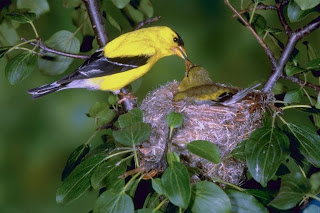Birds (class Aves) are feathers, wings, bipedal, endothermic (warm-blooded), egg-laying, vertebrate animals. With approximately 10,000 living species, which are the most species-rich class of tetrapod vertebrates. All the species belong to the subclass Neornithes, and inhabit ecosystems across the globe from the Arctic to Antarctica. The existing birds vary in size from 5 cm (2 inches) Bee Hummingbird to 2.75 m (9 ft) Ostrich.
The fossil record indicates that birds arose theropod dinosaurs during the Jurassic period, about 160 million years (Ma) ago. Paleontologists consider birds as the only branch of dinosaurs that survived the mass extinction of Cretaceous-Paleogene 65.5 Ma ago.
Modern birds are characterized by feathers, a beak with no teeth, the placement of hard-shelled eggs, high metabolic rate, a four-chambered heart, and a skeleton light, but strong. All living species of birds have wings, flying the now extinct moa of New Zealand were the only exception.
The wings have been developed for the legs, and most birds can fly. Ratites are flightless birds, penguins, and a number of different species native to the island. Birds also have unique digestive and respiratory systems well suited for flight. Some birds, especially corvids and parrots, are among the most intelligent species, a number of bird species observed production and use of tools, and many species of social transmission of cultural display of knowledge between generations.










No comments:
Post a Comment